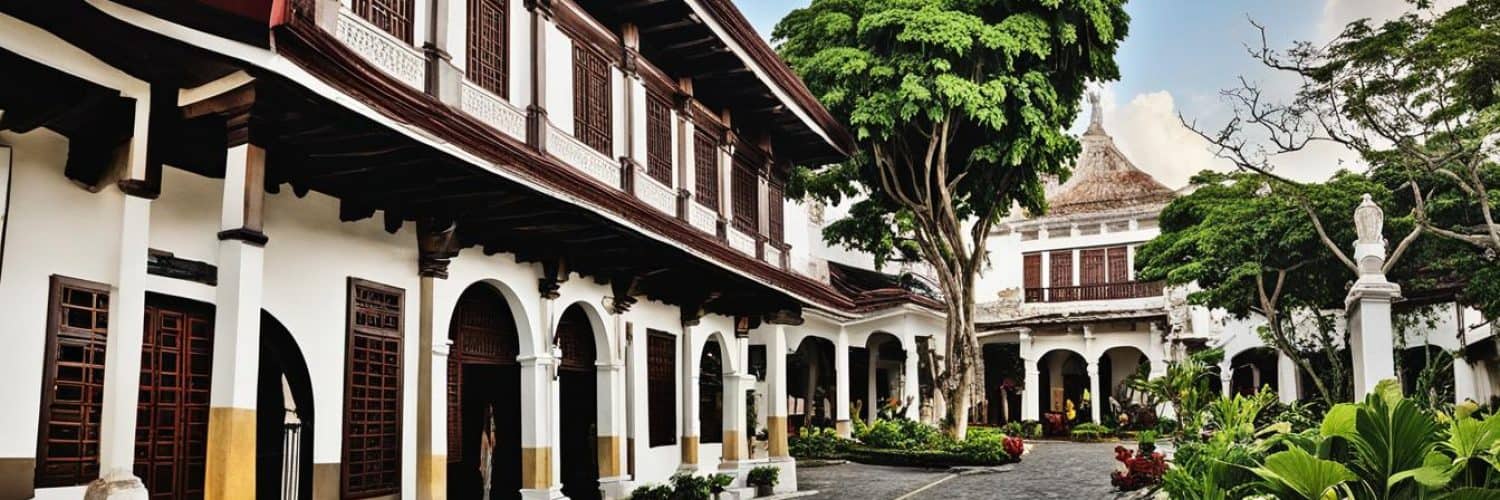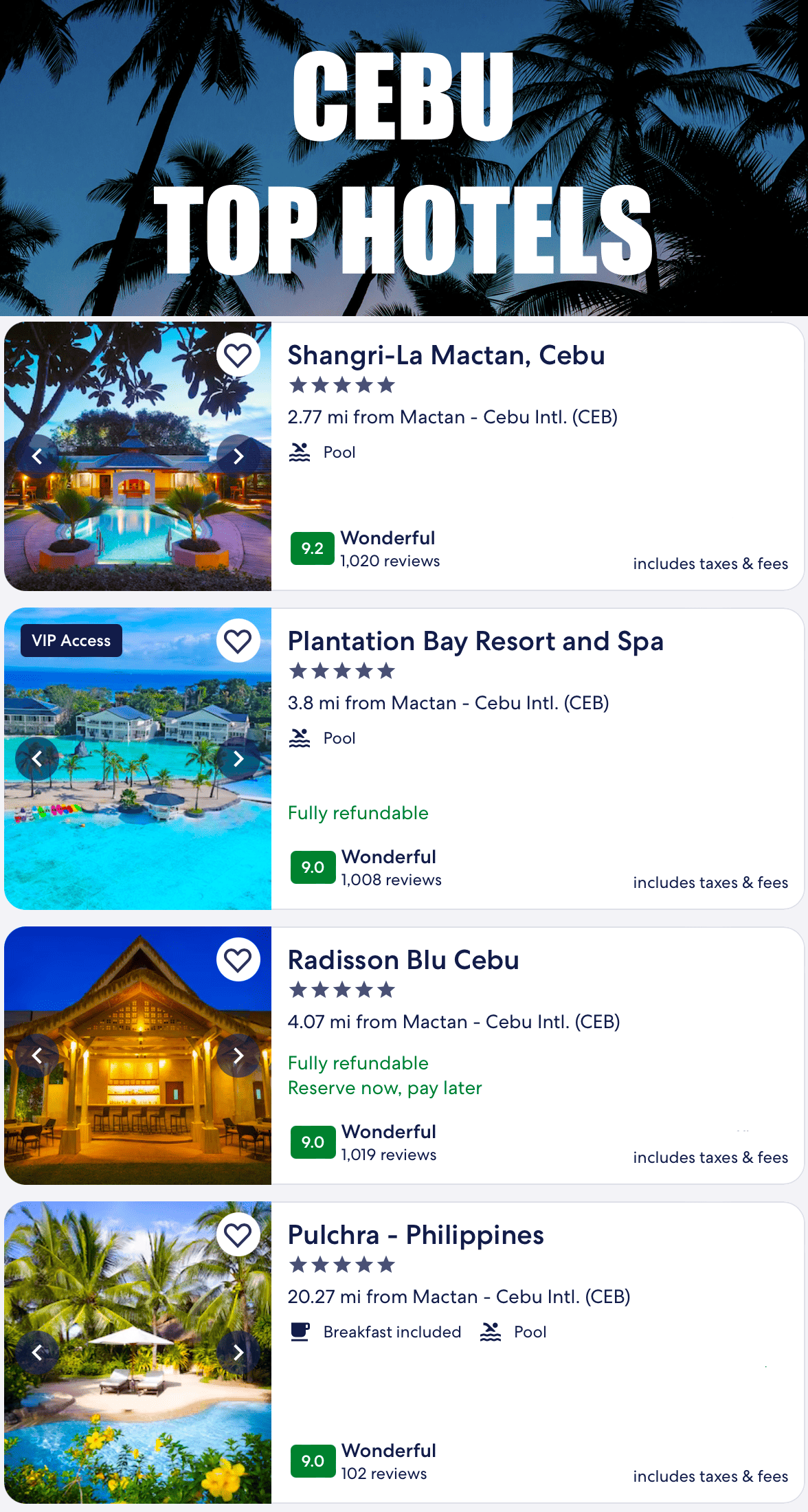Steeped in the narrative of Filipino culture, the Casa Gorordo Museum emerges as a beacon of history in the heart of Cebu. This antique abode, now a cherished museum, invites the curious and the scholarly to explore the labyrinth of time, cultural evolution, and identity that define the Filipino heritage. Nestled among the acclaimed historical sites in Cebu, the museum offers a captivating look at Cebuano life from the 1850s right through to the modern era.
Transformed from a family residence to a National Historical Landmark, Casa Gorordo stands as a poignant reminder of the social transformations that have sculpted the Philippines. With an experience designed to last between one and two hours, the museum is frequently featured in city tours, underscoring its role as an instrumental piece in the puzzle of understanding both the past and present of Cebu.
Key Takeaways
- Immerse yourself in the cultural depth of Casa Gorordo Museum, a vital dive into Filipino heritage.
- Discover why this museum ranks highly amongst the historical sites in Cebu.
- Experience the social and cultural evolution of Cebu firsthand.
- Learn about Filipino identity through the preserved artifacts and exhibits.
- Consider including the museum in your tour itinerary to get a comprehensive understanding of Cebu’s rich history.
Casa Gorordo Museum: An Introduction to Cebu’s Past
Step into the Casa Gorordo Museum and embark on a journey that takes you back to the charming era of Cebu in the 1800s. Nestled in the vibrant Parian district of Cebu Philippines, this cultural museum is more than a mere tourist attraction; it is a living testimony to the splendor of Filipino architecture and the historical grandeur that was once the lifestyle of one of Cebu’s most illustrious families.
The Historical Significance of Casa Gorordo Museum
The museum’s very foundations are steeped in history, offering visitors an authentic glimpse into the affluent world of the Gorordo family. Among the original artifacts are religious relics and elegant vintage furniture that paint a vivid picture of the past. Each piece tells its own narrative, allowing one to trace the cultural evolution that has shaped the Cebuano identity to this day.
The Architecture and Design of the Ancestral House
Much can be said about the distinct architectural heritage that the ancestral house represents. A remarkable mélange of native design, Spanish flair, and subtle Chinese influences, the structure embodies the mestizo spirit indicative of the historical and cultural amalgamation that arose during colonial times in the Philippines.
- Meticulously restored rooms maintain their original splendor.
- Elaborate wooden carvings demonstrate traditional Filipino craftsmanship.
- Ventanillas and capiz shell windows exemplify Spanish colonial elements adapted to the tropical climate.
Guided tours help decode these intricate architectural details and the symbolism behind them, providing a profound understanding of the Cebuano’s adaptation to the colonial era. It is a veritable educational experience that brings to life the customs and day-to-day existence of the Filipino gentry of a bygone era.
| Aspect of Gorordo House | Description | Significance |
|---|---|---|
| Exterior | White Coral Stone Walls | Symbol of durability and Filipino resilience |
| Interior | Antique Wooden Floors | Reflects the wealth and status of the Gorordo family |
| Roof Design | Tiled Gable Roof | Merges practicality with Filipino and Spanish aesthetics |
| Capiz Windows | Shell windows that promote airflow | A fusion of indigenous ingenuity with a Spanish influence |
In its entirety, Casa Gorordo Museum doesn’t just preserve history; it narrates it through every beam, artifact, and hollowed hall, making it a must-visit cultural landmark for anyone wishing to connect with the soul of Cebu Philippines.
A Peek into the Gorordo Family’s Legacy in Cebu, Philippines
Few locations in the Philippine archipelago carry the historical resonance and tangible legacy of Philippines tourism quite like Casa Gorordo Museum in Cebu. Steeped within the heart of Cebu’s storied past, this foundational historical site in Cebu not only enchants visitors with its visual allure but also tells the compelling narrative of the Gorordo family—a name intrinsically linked to the Filipino heritage.
The museum’s inception can be traced back to Alejandro Reynes y Rosales, passing down to an influential family whose very name—Gorordo—echoes throughout Cebu’s history. This residence-turned-museum embraces the authentic Filipino spirit through the legacy of Juan Gorordo, the revered first Filipino bishop of Cebu, whose lineage epitomizes the cultural resilience and adaptability of the Filipino people.
At Casa Gorordo, every chamber, hallway, and antiquity mirrors the cultural metamorphosis of the Filipino people, tracing the transition from Spanish colonization to the breath of independence. As authentic as the wood grains of its ancestral structures, the museum serves as a physical testament to the cultural imprints left by four generations of the Gorordo family on the societal canvas of Cebu. Here, one can tangibly grasp the threads of history, each weaving a rich narrative tapestry reflecting the fascinating evolution of Cebuano society and culture.
- Legacy of the Gorordo family: An exploration of unique historical narratives
- Preservation of cultural identity: An insight into life during different historical periods
- Architectural storytelling: Structural testimony of the island’s colonial past
Submerging into the past, one can still discern the whispers of bygone eras that reverberate within the museum’s walls—a homage to a family synonymous with Cebu’s storied heritage. The Casa Gorordo Museum remains an essential pilgrimage destination for anyone seeking a profound connection with the Filipino culture and a deeper understanding of the colorful mosaic of Philippines tourism.
Embarking on a journey through the museum not only informs but transforms perspectives, bridging past and present to inspire future narratives. Indeed, the museum stands as a lighthouse of Filipino legacy amidst the bustling waves of modernity—a beacon inviting exploration, reflection, and absolute awe.
Architectural Marvel: Merging Filipino, Spanish, and Chinese Influences
The Casa Gorordo Museum in Cebu, the Philippines is not only one of the most distinguished historical sites in Cebu, but it is also a magnificent example of Filipino architecture. Its design epitomizes the colonial ‘balay nga tisa’ style, making it an architectural jewel that illustrates the melding of cultural and construction practices from Filipino, Spanish, and Chinese traditions. Situated in the historically rich Parian district, the museum itself has become an emblematic cultural museum that enriches our understanding of the Filipino identity.
Visitors to the museum can observe the tiled roof — a characteristic feature of the era’s Filipino houses — among other architectural elements. The ‘mestizo’ nature of the building is a tangible representation of the confluence of eastern and western cultural influences.
| Cultural Influences | Architectural Features | Historical Impact |
|---|---|---|
| Filipino | Tiled roof (tisa) | Indigenous building techniques |
| Spanish | Stone bottom (zaguan) | Colonial era aesthetic |
| Chinese | Wooden upper story with ventanillas | Trade and craftsmanship heritage |
The Parian district, a once-thriving hub for commerce under Spanish rule, began as a settlement for Chinese merchants and evolved into a neighborhood for prosperous mestizo families. The Casa Gorordo Museum not only immortalizes the architectural past but also stands as a testament to the cultural dynamism that characterizes much of Cebu’s heritage today. The district’s historical transformation from a Chinese enclave to a mestizo stronghold is inextricably linked to Cebu’s journey towards becoming a cosmopolitan and culturally diverse city.
Cebu’s Cultural Landscape Through the Lens of Casa Gorordo
At the heart of Cebu, the Casa Gorordo Museum stands as a beacon of Filipino heritage, inviting visitors to explore one of the must-visit attractions in Cebu. Within its walls is a tangible historical narrative, eloquently told through its collection of artifacts and antique furniture.
Preserved Artifacts and Antique Furniture
Each piece within the Casa Gorordo Museum’s extensive collection holds a whisper of the past, offering a unique opportunity to engage with the Filipino heritage. From intricately carved furnishings to ornamental keepsakes, visitors can travel back in time to a Cebu shaped by the hands of history.
The Richness of Filipino Heritage Displayed
The museum’s displays are not just exhibits but are narratives woven into the very fabric of Filipino culture. Here, every room and every showcased item contribute to a story much vaster than itself, depicting the rich tapestry of traditions and values that have been treasured by generations of Cebuanos.
Visiting Essentials: Planning Your Trip to Casa Gorordo Museum, Cebu Philippines
Embarking on a journey to Cebu Philippines? The Casa Gorordo Museum is a heritage treasure integral to Philippines tourism, offering an intimate look at the rich cultural tapestry of the country. Before setting foot in this historical sanctuary, a well-planned itinerary will ensure a fulfilling exploration of both the museum and the vibrant Parian district that cradles it.
Operational Hours and Best Times to Visit
Visitors to the Casa Gorordo Museum can immerse themselves in historical wonders every day, as the venue welcomes guests from 9:00 AM to 5:00 PM. For a serene tour, consider arriving during weekday mornings when the museum is less crowded, allowing for an undisturbed appreciation of the exhibits and ambience.
Navigating the Historical Parian District
The Parian district, a historic area once bustling with the activities of Chinese merchants and wealthy mestizos, is now a hub for cultural enthusiasts. Casa Gorordo Museum is located at the heart of this district, within walking distance from other significant landmarks such as the Yap Sandiego Ancestral House and the Cebu Heritage Monument. Visitors can delve into the past with the multitude of tours available that feature Casa Gorordo Museum as a prominent attraction, enriching their experience of Cebu Philippines.
| Tourist Site | Distance from Casa Gorordo Museum | Travel Time by Foot |
|---|---|---|
| Yap Sandiego Ancestral House | 0.2 km | 2-3 minutes |
| Cebu Heritage Monument | 0.1 km | 1-2 minutes |
| Fort San Pedro | 1.5 km | 18-20 minutes |
Whether you are a history buff or simply drawn to the allure of Cebu’s past, planning your visit to Casa Gorordo Museum and the surrounding historical wonders will surely leave you spellbound. Embrace the journey through time in one of the Philippines’ most storied districts.
The Experience of History: Guided Tours and Insights
Undoubtedly, one of the most enriching avenues to explore the historical sites in Cebu is through the guided tours at Casa Gorordo Museum. When it comes to Philippines tourism, these tours are not just about viewing artifacts; they offer a narrative journey that enhances the appreciation of this renowned cultural museum.
Tours at Casa Gorordo Museum capture the essence of visiting historical locations. With stories that paint vivid pictures of the past, the guides unlock the secrets behind every exhibit. The personalized insights into the Gorordo family’s impact on the city’s history contribute to an experience that goes far beyond looking through glass displays. It’s about feeling connected to the cultural fabric that defines Cebu. Moreover, these narratives engage people of all ages, making it a versatile destination whether you’re a solo explorer or part of a larger group.
Below is an overview of what visitors can expect from a guided tour of this historic house:
| Aspect of Tour | Details | Impact on Visitor Experience |
|---|---|---|
| Historic Insights | Backstories of the artifacts and the architecture. | Deepens understanding of Filipino history and heritage. |
| Family Legacy | Explores the Gorordo family lineage and their social influence. | Personalizes the historical narrative and connects visitors to local stories. |
| Architectural Significance | Detailed explanations of architectural details and their origins. | Appreciation for the Filipino-Spanish-Chinese design fusion significant to Cebu. |
| Interactive Storytelling | Guides engage visitors with stories of Cebu’s past. | Makes history accessible and enjoyable for all ages. |
| Cultural Significance | Context provided for each exhibit and how it relates to Cebu’s culture. | Encourages a deeper connection with the customs and traditions of Cebu. |
It’s clear that a guided tour through Casa Gorordo Museum is more than just a walk-through; it’s an invitation to step back in time and witness Cebu’s rich historical tapestry unfold before your eyes. The value these tours provide in conveying the narratives of the past ensures that the museum stands out as a must-visit in the vibrant realm of Philippines tourism.
Museum Highlights and Must-See Exhibits
Embark on a cultural journey through the Casa Gorordo Museum, where each floor is a revelation of Cebu’s historical grandeur. A cultural museum of this caliber captures the spirit of historical sites in Cebu and conveys the profound narratives of the past.
The Ground Floor Galleries and Their Significance
The ground floor of the Casa Gorordo Museum is an essential starting point for visitors. It’s where the story of transportation and progress unfolds, showcasing an array of carriages and vehicles that provide historical context to Cebu’s development. Here, you’ll find exhibits meticulously curated to represent different aspects of life in Cebu, each significant artifact echoing the cultural transformation over the years.
Exploring the Upper Floor: A Glimpse into 19th-Century Affluence
Ascending to the upper floor transports you to the pinnacle of 19th-century affluence. The opulent life of the Gorordo family is on full display with their personal belongings and intricate household items. Each exhibit tells a unique story of prestige and luxury, offering a real glimpse into the lifestyle of Cebu’s most distinguished historical figures. Discover a world where every item, from furniture to finery, speaks volumes about the cultural and social standing of its time.
Cebuano Crafts and the Fusion of Colonial and Indigenous Art
The Casa Gorordo Museum, a beacon of Filipino heritage, stands proudly in Cebu Philippines, as a custodian of the rich tapestry of local arts. This cultural museum captures the essence of Cebuano dedication to craftsmanship, displaying a remarkable array of creations that effortlessly weave together strands of colonial and indigenous techniques. Visitors to the museum are treated to an enchanting visual dialogue between old-world intricacies and the resounding heartbeat of native art forms.
These crafts are more than mere objects; they are storied pieces, each embodying a narrative of cultural exchanges and cross-continental influences that have shaped the distinct identity of Cebu. Captured within the walls of this museum, one can feel the pulsating harmony of history and artistry.
- Intricately woven baskets, showcasing the finesse of local weavers
- Elaborate wooden carvings, reflecting Spanish influence with native flair
- Adorned textiles, demonstrating the confluence of Asian and European aesthetics
Each item within the Casa Gorordo Museum serves as a tactile testament to the enduring spirit and skill embedded within Cebu’s culture—a vitality and resilience that has transcended epochs and empires.
Indeed, the crafts you’ll explore in the museum corridors are more than remnants of the past; they are vivid touchpoints to a living, breathing legacy that continues to inspire and educate. They beckon visitors from near and far to revel in the uniqueness of a creative journey that is quintessentially Cebuano, unquestionably Filipino, and universally captivating.
Special Events and Cultural Performances at the Museum
Delving beyond its historical significance, Casa Gorordo Museum stands as a cultural beacon in Cebu, hosting a myriad of events and performances that celebrate the Filipino spirit. As one of the must-visit attractions in Cebu, it plays a pivotal role in the cultural tapestry of the city, bringing together traditional Filipino music, dance, and arts to the delight of visitors and locals alike.
Throughout the year, the museum transforms into a vibrant stage where cultural heritage is not just observed but actively experienced. These events highlight the colorful history of the Philippines and underscore the importance of the historical sites in Cebu as living spaces of cultural exchange and education.
- Traditional Filipino Dance Performances
- Live Folk Music Sessions
- Theatrical Plays and Historical Reenactments
- Seasonal Cultural Festivals and Exhibitions
- Interactive Workshops on Traditional Crafts
Allow yourself to be enchanted by the rhythmic beats of the kulintang or the elegant movements of the tinikling dance. Every performance and exhibit is a testament to the resilience and vibrancy of Filipino culture, making a visit to the Casa Gorordo Museum truly unforgettable.
Tourists and residents alike echo the sentiment that the Casa Gorordo Museum does more than just preserve the past; it ignites the future of cultural appreciation and understanding through its dynamic offerings.
Supporting the Museum: Souvenirs and Visitor Participation
When exploring the rich cultural panorama of the Philippines, the Casa Gorordo Museum stands as a beacon of Filipino heritage, offering a chance to journey through history. Here, Philippines tourism and cultural preservation converge, inviting visitors not only to observe but to partake intimately in safeguarding Cebu’s storied past. Participating in this mission becomes a tangible experience at the museum’s gift shop—a place where memories are crystallized into keepsakes.
Unique Finds at the Museum Gift Shop
From the moment you step into the Casa Gorordo Museum’s gift shop, you are met with an array of handcrafted treasures that speak volumes of the Filipino spirit. Each item, be it an intricately woven garment or a hand-carved ornament, carries the essence of Cebu’s rich artisanal traditions, ready to find its way into the homes and hearts of those who appreciate the timeless value of Filipino craftsmanship.
Whether for personal keepsakes or gifts for loved ones, the souvenirs from Casa Gorordo Museum serve as lasting mementos of an unforgettable journey into the heart of the Philippines. They embody the soul of Filipino heritage, each article telling its own storied past, just waiting to be passed on as a narrative of cultural pride.
Engaging with the Museum’s Efforts to Preserve Cebuano Culture
Your immersion in the Filipino heritage does not end with a tour; it extends through the conscious choices made in the museum’s gift shop. Here, every purchase is a pledge of support, aiding ongoing efforts to maintain and exalt the rich tapestry of Cebuano history and culture. When visitors purchase these souvenirs, they become an integral part of the cultural ecosystem, contributing to the museum’s noble undertaking of heritage preservation and celebration—ensuring that the stories of Cebu will resonate with future generations.
Conclusion
In the heart of Cebu, Philippines stands the renowned Casa Gorordo Museum, a cultural beacon celebrating the Filipino heritage. This heritage house turned museum offers an unparalleled journey through time, where every corner tells a story of the Philippines’ rich historical tapestry. Visitors to the museum are invited to delve into a past that melds a myriad of architectural styles and cultural influences, echoing the lives and traditions of those who have walked its halls.
Understanding the Filipino identity is incomplete without recognizing the influences that have shaped it. The Casa Gorordo Museum serves as a living exhibit, displaying a compelling fusion of Spanish, Chinese, and native Filipino architectural nuances, alongside a collection of artifacts that preserve the essence of 19th-century Cebuano affluence. Through intimate guided tours and vivid storytelling, the intricate details of Cebu’s vibrant history are eloquently shared, offering a learning experience as enriching as it is engaging.
As a custodian of history and a site of cultural celebration, the museum secures its place as a gem among the historical sites in Cebu. From its tiled roofs to the finely crafted antique furnishings within, Casa Gorordo Museum stands as a testament to the enduring spirit of the Filipino people. It beckons locals and travelers alike to experience firsthand the living legacy of Cebu’s bygone eras, etching its narratives into the hearts of all who pass through its venerable doorway.
FAQ
What is the historical significance of Casa Gorordo Museum?
Casa Gorordo Museum is a key historical site in Cebu that offers a deep dive into Filipino heritage. It stands as a testament to the social transformations and cultural heritage that have shaped the Cebuano and wider Filipino identity since the 1850s.
What are the architectural features of the ancestral house?
Who were the Gorordo family?
The Gorordo family were prominent figures in Cebu’s history, with the family’s legacy including Juan Gorordo, the first Filipino bishop of Cebu. They were influential in various social and economic aspects of Cebuano life through four generations.
How does Casa Gorordo Museum contribute to the cultural landscape of Cebu?
The museum showcases artifacts, antique furniture, and religious relics that narrate the history and lifestyle of 19th-century Cebu. These exhibits offer unparalleled insights into the affluence, traditions, and social practices of the Gorordo family and by extension, the Cebuano society of the time.
When is the best time to visit Casa Gorordo Museum?
To avoid the crowds and have a more intimate experience, it is recommended to visit the museum during less busy times, such as weekday mornings. The museum is open daily from 9:00 AM to 5:00 PM.
What can I find in the museum’s ground floor galleries?
The ground floor galleries at Casa Gorordo Museum feature an array of vehicles and historical treasures that set the stage for the museum’s rich narrative of Cebu’s history and the lives of its past residents.
Are there guided tours available at Casa Gorordo Museum?
Yes, guided tours are available and they offer an enhanced experience by providing valuable insights into the Gorordo family’s background, the history of Cebu, and the significance of the museum’s collection.
Can I find crafts and art at Casa Gorordo Museum?
Definitely, the museum is home to many Cebuano crafts that display the artistry and creativity of the region. These crafts embody an integration of local techniques with colonial influences, reflecting a long history of cultural exchange.
Does the museum host special events and cultural performances?
Yes, the Casa Gorordo Museum hosts various special events and cultural performances throughout the year, bringing Cebu’s history and Filipino heritage to life for visitors.
What types of souvenirs can I buy at Casa Gorordo Museum?
The museum’s gift shop offers a selection of unique souvenirs, including crafts and memorabilia that mirror the museum’s dedication to cultural preservation. Purchases from the gift shop support the museum’s ongoing efforts to maintain and showcase the rich tapestry of Cebuano history and culture.











Add comment